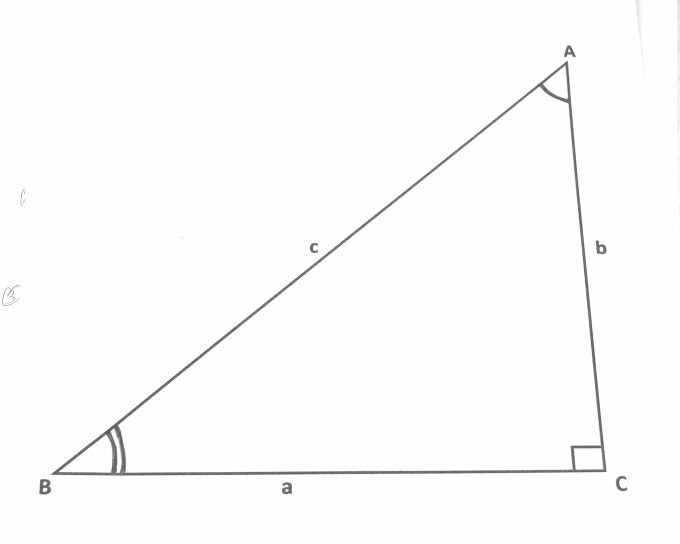You will need
- Paper, pen, calculator, table of sines and a table of tangents(there is online)
Instruction
1
Let the sides of the triangle are labeled a and b, hypotenuse, and opposite sides of the angles A, B and C. If we know the hypotenuse (C) and second leg (b), you should use the Pythagorean theorem: the square of the hypotenuse of a right triangle is equal to the sum of the squares of the other two sides (c2 = a2 + b2). It follows that to calculate the side a, you must remove the root from the difference of the square of the hypotenuse and square of the second leg (a = v(c2-b2)).
2
If you know the hypotenuse (C) and the angle lying opposite the side (A), the length of which you want to find, you can use the formula a = PA. In order to determine the sine of the angle, look in a table of sines and just look at the value corresponding to the degree measure of the angle. If, say, angle A is 43 degrees, its sine is equal to 0.682. Taken from the table the value of the sine and multiply by the length of the hypotenuse and get the length of the leg.
3
If you know the hypotenuse (C) and the angle adjacent to the desired side, (B) then the easiest way will be to repeat step 2, pre-calculate the opposite angle. From 90 (the sum of the acute angles in the triangle is 90 degrees), subtract the degree measure of the adjacent angle.
4
If you know the second leg (b) and the angle opposite the side length of which should find,(A) it is necessary to use the formula: a = b tgA. That is, the first table of tangents to find the tangent ratio for a known angle, and then multiply this value by the length of the second leg.




